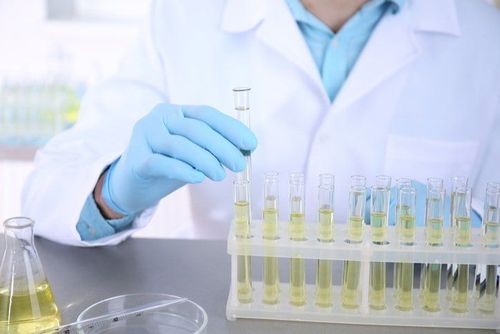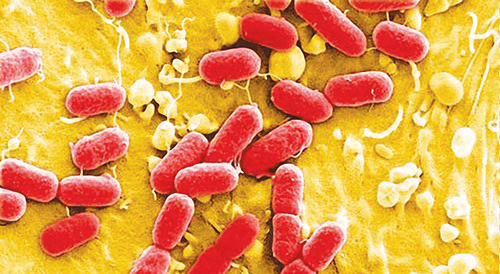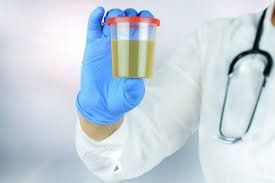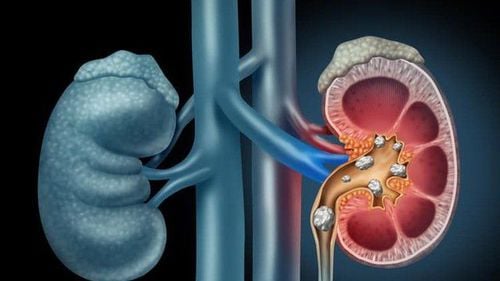Gravid woman is frequently required to undergo a urine test during their routine pregnancy health medical examination. Urine testing is one of the most significant and essential tests during pregnancy since it indicates the mother's health status as well as the fetus's development at each stage.
1. How to do a urine test during pregnancy
Pregnancy is a fascinating period since you are creating a new life within your body. Doctors will take special steps for pregnant women to ensure that the procedure is safe and smooth. Every time you have a pregnancy screening, your doctor will ask you to do a urine test, which is an accurate technique to detect risk factors throughout pregnancy.
How to do it:
- You will be given a urine sample cup and a sterile towel and then guided to the bathroom to take a sample.
- Wash your hands thoroughly, then use your fingers to separate the labia and wipe the vulva from front to back with a sterile wipe.
- Urinate for a few seconds in the toilet and place the cup in the middle of the stream until enough sample is collected.
The urine will be collected in a sterile container to prevent bacteria or other agents from affecting the results. Doctors dip a test strip with appropriate chemicals into the urine sample to screen for certain diseases.
Based on the test results, the doctor will advise pregnant mothers to have a suitable examination regimen to ensure safety throughout the pregnancy.
Trắc nghiệm: Bạn có hiểu đúng về dấu hiệu mang thai sớm?
Các dấu hiệu mang thai sớm không phải chỉ mỗi trễ kinh mà còn có rất nhiều dấu hiệu khác như xuất huyết âm đạo, ngực căng tức,… Điểm xem bạn biết được bao nhiêu dấu hiệu mang thai sớm thông qua bài trắc nghiệm này nhé!
2. What can the results of a urine test during pregnancy predict?
Here are the problems that can be found when pregnant mothers perform a urine test based on the pregnant woman's urine test indicators:
2.1 Glucose (Glu)
Glucose is a type of sugar found in the blood. Typically, there will be no or very little glucose in the urine. When blood sugar levels are very high, such as uncontrolled diabetes, sugar will escape into the urine. Glucose can also be found in urine when the kidneys are damaged or diseased.
- Reference index: 50-100 mg/dL or 2.5-5 mmol/L.
- If you eat many sweet foods before the test, the appearance of glucose in the urine is Standard l. Nevertheless, if the sugar level in the second test is higher than the first, this is a warning sign that you are at risk of diabetes. If you have symptoms of fatigue, constant thirst, or weight loss, you should see a doctor to check your blood sugar.
2.2 Leukocytes (LEU ca): white blood cells
- Reference range: 10-25 Leu/UL.
- When urine contains white blood cells, the pregnant woman may have a bacterial or fungal infection (it has a suggestive value for urinary tract infection, but cannot confirm it); in the process of fighting off invading bacteria, some red blood cells die and are released into the urine. Hence, you need a nitrite test to identify the bacteria causing the infection.

2.3 Nitrate (NIT)
- This parameter will help doctors determine whether pregnant women are at risk of urinary tract infections.
- Standard index: 0.05-0.1 mg/dL.
- Bacteria that cause urinary tract infections produce an enzyme that can convert urinary nitrate into nitrite. Therefore, if nitrite is found in urine, it means that there is a urinary tract infection, and E.Coli bacteria are the most dangerous bacteria that cause this condition.
2.4 Urobilinogen (UBG)
- This index shows signs of liver or gallbladder disease.
- The Reference index is 0.2-1.0 mg/dL or 3.5-17 mmol/L.
- This product is formed from bilirubin degradation and excreted from the body in the stool. Only a small amount of urobilinogen is present in urine. Urobilinogen in urine can be a sign of liver disease (cirrhosis, hepatitis) that blocks the flow of bile from the gallbladder.
2.5 Bilirubin (BIL)
- The Reference index is 0.4-0.8 mg/dL or 6.8-13.6 mmol/L.
- This index shows signs of liver or gallbladder disease.
- Bilirubin is a product formed from the degeneration of red blood cells. It leaves the body through the stool. Bilirubin usually is not present in urine. If bilirubin appears in urine, the liver is damaged, or the flow of bile from the gallbladder is blocked.
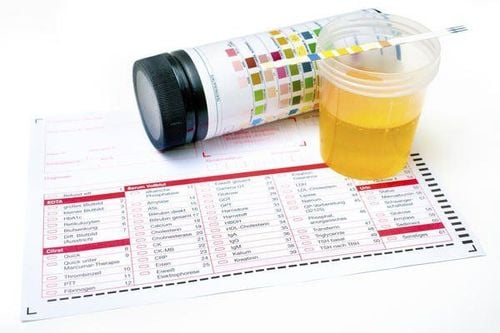
2.6 Protein (Pro): protein
- This index shows blood in the urine, infection, or kidney disease.
- The reference index is 7.5-20 mg/dL or 0.075-0.2 g/L.
- Suppose the test detects a protein in the urine. In that case, the pregnant woman's condition may be related to symptoms such as dehydration, mucus in the test sample, urinary tract infection, high blood pressure, kidney problems, and so on.
- In the late stages of pregnancy, if there is much protein in the urine, the pregnant woman is at risk of preeclampsia and blood poisoning. If the pregnant woman has swelling in the face and hands or high blood pressure, she needs to be tested for preeclampsia immediately. In addition, if albumin (a type of protein) is detected in the urine, it also warns that the pregnant woman is at risk of pregnancy poisoning or gestational diabetes.
2.7 pH
- The pH is used to assess the acidity of urine
- The standard index is in the range 4.6-8
- This index is used to test whether the urine is acidic or alkaline. If pH = 4 means urine is strongly acidic, pH = 7 is neutral (neither acidic nor basic), and pH = 9 means urine is strongly alkaline.
2.8 Blood (BLD)
- This index shows signs of urinary tract infection, kidney stones, or bladder or kidney tumor bleeding.
- Acceptable index from: 0.015-0.062 mg/dL or 5-10 Ery/UL.
- Inflammatory diseases or damage to the kidneys, ureters, bladder, and urethra can cause blood to appear in the urine.
2.9 Specific Gravity (SG)
- This index is used to assess whether urine is dilute or concentrated (due to drinking too much water or lack of water)
- Acceptable index: 1.005-1.030
2.10 Ketone
- This index often appears in people with diabetes, low-carbohydrate diets, alcoholism, or physical weakness.
- Reference index: 2.5-5.0mg/dL or 0.25-0.5 mmol/L. Usually absent or sometimes present at low levels in pregnant women.
- Ketone is a substance excreted in the urine, indicating that the pregnant woman and fetus are malnourished or have diabetes. When detecting Ketone levels, accompanied by signs of loss of appetite and fatigue, the pregnant woman should be prescribed IV fluids and medication by the doctor. To reduce the amount of Ketone, the pregnant woman should relax, rest, and try not to skip meals.
2.11 Ascorbic Acid (ASC)
- Ascorbic Acid (ASC) is a waste product in urine to assess kidney disease
- Standard l index: 5-10 mg/dL or 0.28-0.56 mmol.L
Based on the above information, you can understand the meaning of the indicators in urine tests during pregnancy. Urine testing during pregnancy is indispensable because it is the best way to detect early urinary tract infections, preeclampsia, high blood pressure, gestational diabetes, and so on to ensure the health of both mother and child.
Vinmec International General Hospital offers a comprehensive maternity care program for pregnant women right from the beginning of pregnancy from the first months with full prenatal check-ups, periodic 3D 4D ultrasounds, and high-quality prenatal screening tests, with a modern system of machinery, a team of enthusiastic and skilled doctors will ensure you have the healthiest and most favorable pregnancy.
Please dial HOTLINE for more information or register for an appointment HERE. Download MyVinmec app to make appointments faster and to manage your bookings easily.





